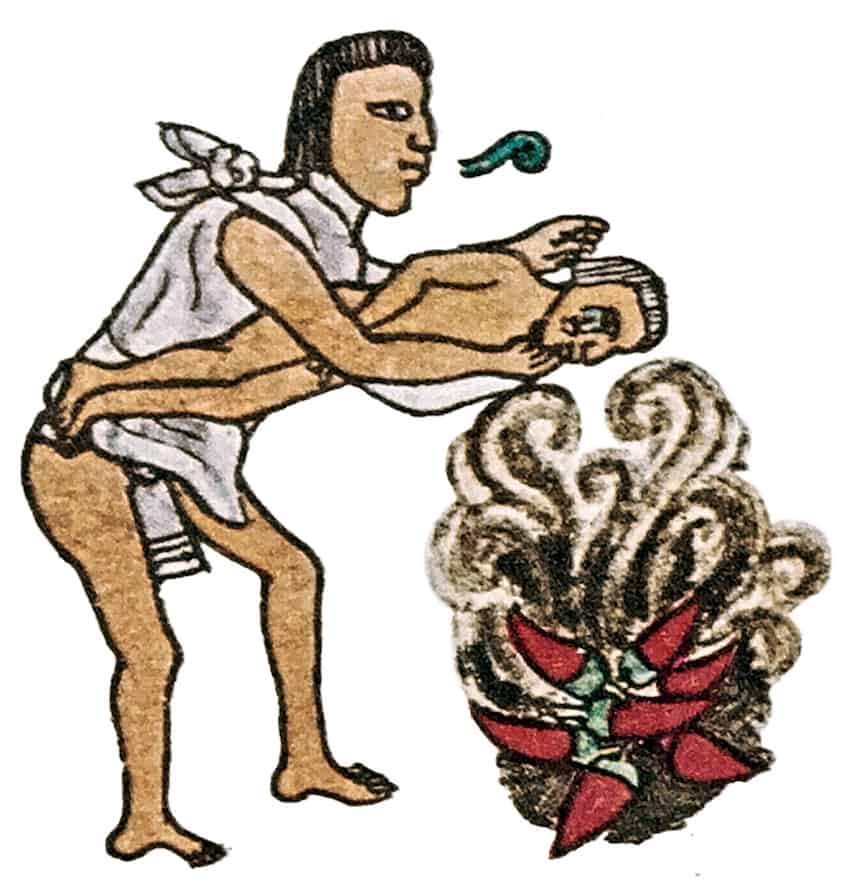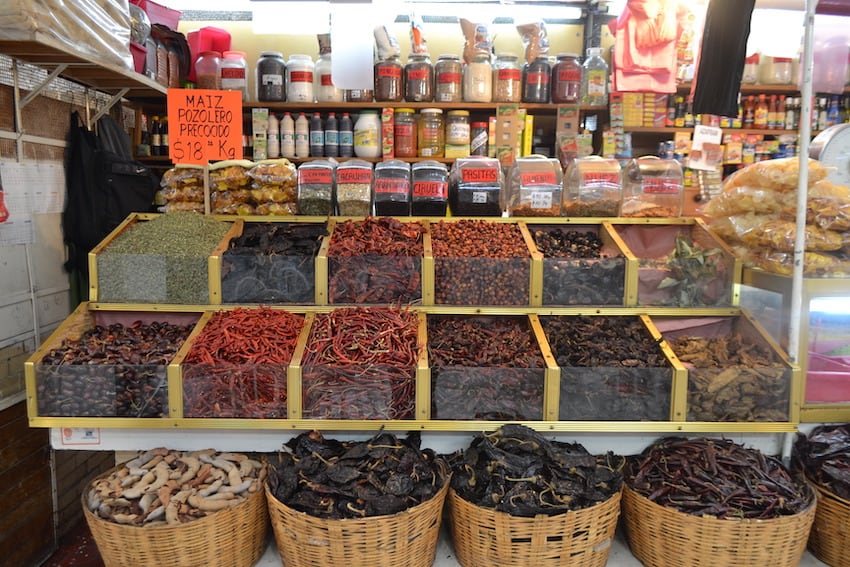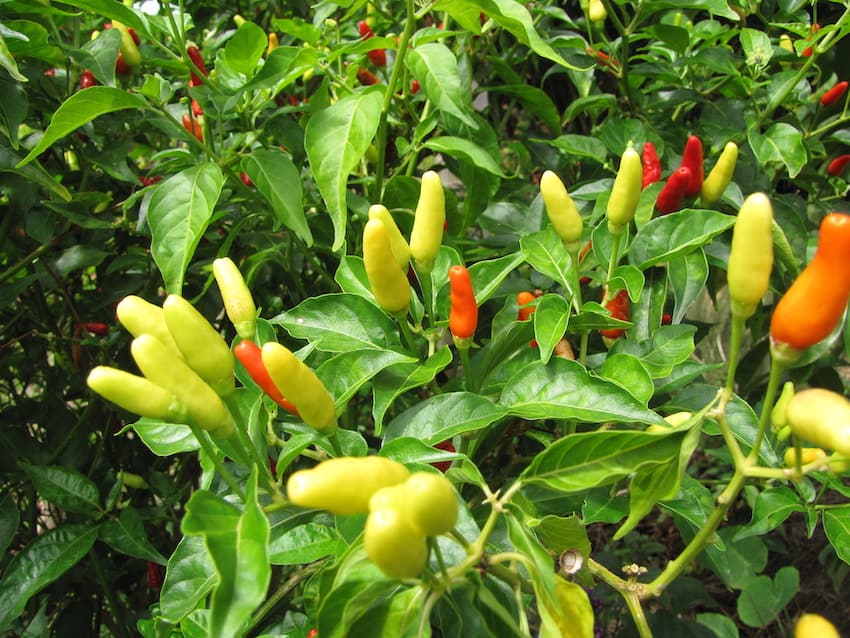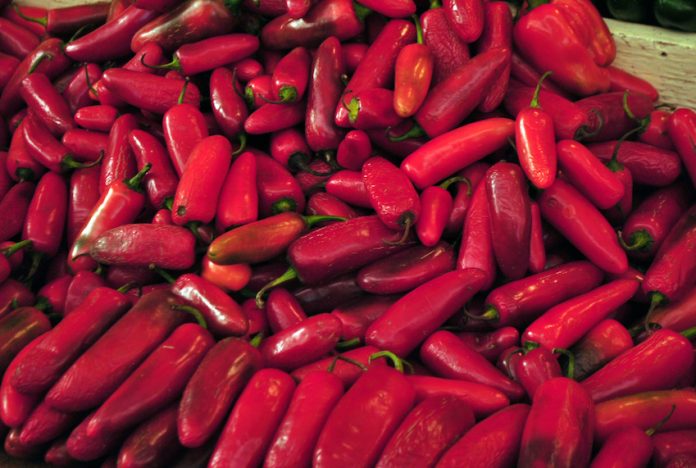Step into a sizzling world where passion and pain entwine. As ancient as the Mexica pyramids and as thrilling as a roller coaster, the history of hot peppers unveils a secret: there’s a reason we love to turn up the heat!
In Mexica cosmology, hot peppers had their own goddess, Tlatlauhqui cihuatl ichilzintli, or “Respectable Lady of the Little Red Chili”, the sister of the more famous Tláloc, god of rain. In 1566, Spanish conquistador Bartolomé de las Casas famously wrote that “Without chili, Mexicans do not believe they are eating.”

Over millennia, our Mesoamerican ancestors learned to cultivate and eat chiles, native to South and Central America. Recognizing their different flavors and degrees of spiciness, they learned how to combine them with other ingredients. It is this accumulated wisdom that now makes chiles an icon of our beloved national cuisine.
Archaeological studies in southern Mexico have shown that the use of chiles in Mesoamerica may date all the way back to about 400 BCE. Peppers were an important part of the pre-Columbian diet, along with corn, beans, tomato and squash.
The Mexica of central Mexico used them not only as an essential part of their daily diet, but also for medicinal and even military ends, creating a proto-pepper spray by burning chiles downwind of enemies to gain an upper hand in battle.
Mexicans seem addicted to our beloved chiles, and there’s definitely something captivating about these little devils that grow in a wide range of colors, sizes and pungency. The five hottest chiles in Mexico are the habanero, manzano, chiltepín, chile de árbol, and serrano.

In modern times, hot peppers have become a daily delight for many, savored in countries far and wide. Given their modern popularity, it’s intriguing to think that these spicy delights were unknown to the majority of the planet until Christopher Columbus set foot in the New World in 1492 and took peppers to Europe, where they spread to Asia and Africa.
Contrary to popular belief, the chile’s seeds are not the real culprits behind its heat: the magic lies in the fluffy white inner layer known as the placenta or veins. This is the part that produces capsaicin, the chemical compound responsible for the burning sensation.
Wild pepper plants produce capsaicin to protect themselves from being eaten by mammals. From an evolutionary perspective, the plant prefers birds to disperse its seeds throughout the world. And unlike mammals, birds don’t have TRPV1 receptors, so they don’t experience any irritation. Humans, with our peculiar tastes, threw a wrench into nature’s plan. Capsaicin doesn’t deter us; it enthralls us!
Eating hot chile peppers is a form of thrill-seeking that feeds our brain’s desire for stimulation and turns the experience into a twisted delight.

When you bite into a hot pepper, your mouth is engulfed in a sensation reminiscent of a raging inferno. Behind this torment lies a curious twist. When capsaicin hooks up with the TRPV1 receptors in your mouth, it plays a clever trick on your nervous system. It convinces your brain that you’ve come into contact with scorching heat, raising the alarm of a blazing fire in your mouth!
Your brain, ever the cunning survivor, jumps into action. It releases a cascade of feel-good neurochemicals, especially the endorphins that soothe pain. Some scientists believe the endorphin rush is so intense that it surpasses the amount needed to tame the chile’s fury. The scales tip in favor of pleasure over pain, and you find yourself swimming in a pool of tears, sweat and euphoria. A natural high created by increased levels of neurochemicals that boost your sense of wellbeing and make you happier.
If you have spicy dishes regularly, your tongue’s nerves become resilient little crusaders. They build up a resilience to the fiery onslaught, and your heat receptors learn to take it easy. It’s like they’ve enrolled in a capsaicin desensitization course, graduating as seasoned spice warriors.

If you prefer immediate relief, your first impulse might be to gulp down water. Experts say that this worsens the suffering because capsaicin is not water soluble, which means drinking water only spreads the fire. Capsaicin is fat-soluble, so you’ll find relief in a fatty liquid such as milk or ice cream.
So embrace the burn, savor the endorphins and revel in the beauty of chiles, for in every fiery bite, we find a tantalizing reminder that life’s most exhilarating moments often lie just beyond our comfort zones.
Sandra is a Mexican writer and translator based in San Miguel de Allende who specializes in mental health and humanitarian aid. She believes in the power of language to foster compassion and understanding across cultures. She can be reached at: [email protected]
